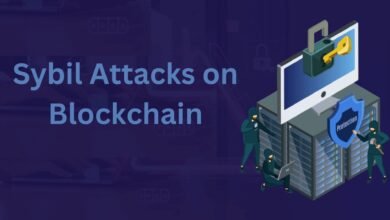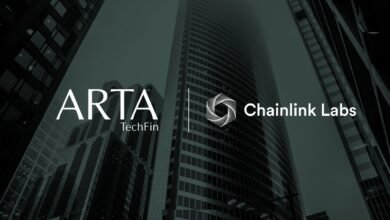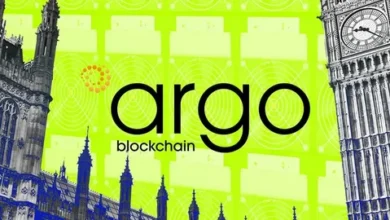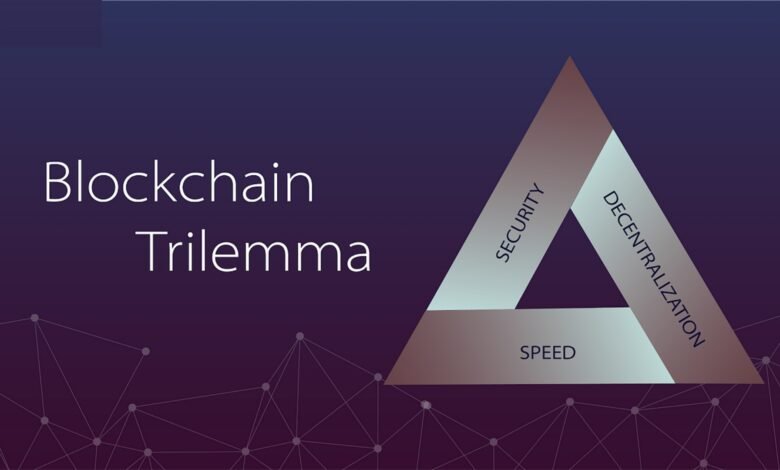
Blockchain Trilemma: Regarding traditional methods of storing and conducting financial transactions, blockchain technology has caused an enormous shift. However, the blockchain trilemma, a significant obstacle, has also brought it to light. Vitalik Buterin, co-founder of Ethereum, defines the blockchain trilemma and discusses the issues it creates.
This exemplifies the importance of decentralization, security, and scalability as separate components of blockchain technology. Security measures for blockchain networks are a set of solid protections. The capacity of blockchain networks to handle an increase in users and transactions without a corresponding increase in transaction fees or times is known as scalability. Lastly, decentralization is an essential feature of blockchain that guarantees all network participants an equal share of power.
You may be asking why the blockchain trilemma is so crucial for programmers and how the potential consequences of the trade-offs may influence blockchain technology’s trajectory. Because improving one of the three factors reduces the impact of the other two, the interaction between them is hazardous. According to most developers, it is exceedingly difficult to balance all three components simultaneously. Allow me to enlighten you on the blockchain trilemma and its possible solutions so that we can overcome these obstacles.
Definition of the Blockchain Trilemma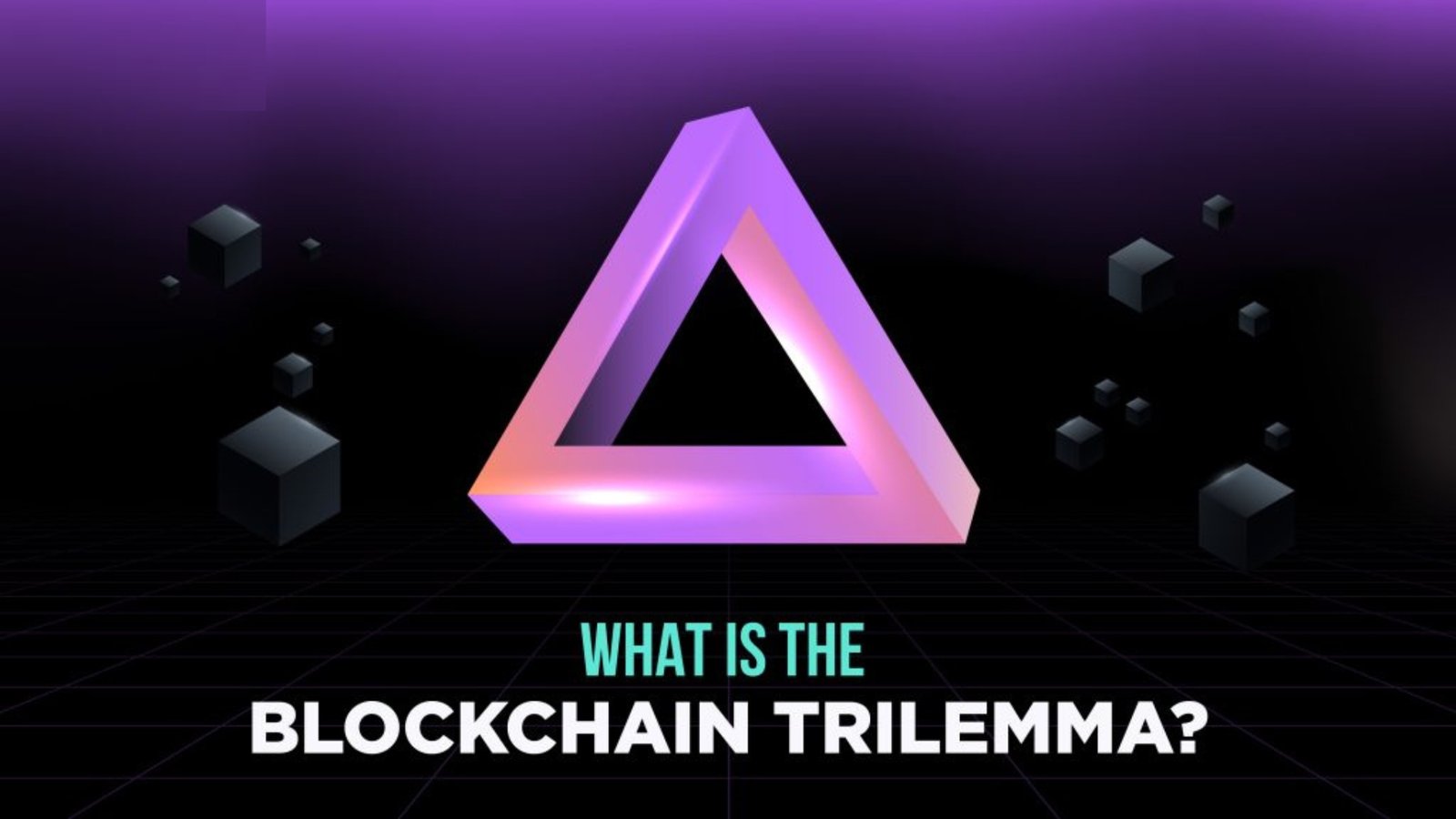
A significant barrier to blockchain and web3 adoption is the blockchain trilemma. If they want their blockchain applications to work, developers must make some sacrifices or concessions among the three components.
It is widely believed in the blockchain community that public blockchains can only accomplish two of the three goals at once. Blockchain developers must decide which features to emphasize to make their applications work as intended. Consequently, the blockchain trilemma is crucial for identifying blockchain developers’ distinct value propositions.
Security
Security is the first and foremost concern when choosing a blockchain network. There is a lot of focus in the blockchain space on security, a critical component of the blockchain trilemma. As any blockchain trilemma guide will tell you, a blockchain network needs the basic protections to keep bad actors out. Because blockchain networks are fundamentally decentralized, no single entity can oversee and secure them, making this a complicated problem.
To learSeetcoin blockchain as an example. Crypt will learn more about blockchain security graphs and the Proof of Work consensus process, which ensures the Bitcoin blockchain is secure. The consensus method guarantees that the interconnection of data blocks is entirely tamper-proof. As soon as the data was altered in any way, the network would notice.
Additionally, the system’s security is enhanced as the number of users or nodes in the network increases. A more significant number of users or entities would make it more difficult to acquire control of the network. The blockchain network can protect itself from dangers like 51% attacks.
Blockchain trilemma described for beginners can be better understood by looking at the Bitcoin blockchain as an example. It demonstrated how a protected blockchain network safeguards data integrity and withstands assaults from bad actors. Security concerns are one of the main obstacles to decentralization since increasing hash power for mining under Proof of Work consensus is necessary.
To illustrate, the Proof of Work consensus can potentially raise mining costs and drive out smaller, less effective mining rigs. There may be a compromise with decentralization if it causes miners to become too centralized.
Scalability
Scalability is the second aspect of the blockchain trilemma. Due to its importance in new blockchain solutions, it is one of the most talked-about aspects of the “What is blockchain trilemma?” definition. When building blockchain networks, scalability is a key feature to prioritize. When discussing blockchain networks, scalability refers to how well they handle ever-increasing transaction volumes and user numbers without slowing down or sacrificing performance.
The demand for new blockchain initiatives has surged due to the web3 revolution. Plus, managing billions of users simultaneously is a must-have for any blockchain project aiming for global reach. When pursuing decentralization and security, the other two trilemma components, scalability becomes an even more formidable obstacle.
Focusing on scalability causes developers to lose sight of decentralization and security improvements. For example, the Bitcoin network can handle a limit of seven transactions per second. Centralized payment systems, like Visa, can process 24,000 transactions per second, dramatically outperforming it.
BlockcThe striking disparity highlights blockchain trilemma and the fundamental architecture of blockchain networks. An example is the fact that blockchain networks’ consensus mechanisms impose restrictions; these mechanisms include Proof of Work and Proof of Stake. With Proof of Work, your network would be safe but sluggish. However, the network performance is negatively affected by Proof of Stake because it necessitates the processing of tractions by several participants.
Scalability is a crucial feature of blockchain technology that depends on its potential and competes with centralized systems. One of the biggest obstacles to scaling blockchain networks is their current throughput. Check out a blockchain trilemma guide to learn about scalability’s significant costs and benefits.
Decreasing the number of network validators tasked with transaction verification is one tried and true way to boost a network’s processing speed and scalability. However, this method undermines blockchain’s resistance to censorship and goes against decentralization.
Additionally, developers can decrease the block time, necessitating a less complex consensus algorithm. Reducing the mining difficulty is an example that comes to mind while considering the Bitcoin network. Decrease the network-wide two-thus threshold by two-thirds of the Ethereum blockchain. However, these compromises might cause security issues.
Decentralization
Blockchain networks vary from traditional centralized systems in that they are inherently decentralized. People talk about decentralization when they ask questions like “What is blockchain trilemma?” because it’s one of the main ideas behind blockchain and web3.
In decentralized blockchain networks, the requirement for a central authority is eliminated due to the equitable control allocation among the various players. Power allocation is crucial to making a blockchain network more open and equitable. In addition, blockchain networks resist outside manipulation and censorship because of the diffusion of control.
It should be mentioned that decentralization cannot be accomplished without significant obstacles. For instance, a blockchain network’s decentralization is enhanced as participants increase. However, they may be combe compromised lengthy procedures are required.
Furthermore, due to the ease with which malevolent actors could join the network and initiate assaults, highly decentralized networks may also have to sacrifice security. Thus, decentralization, which is supposed to be a strength of blockchain networks, might become one of their biggest weaknesses.
Impact of Blockchain Trilemma Trade-offs
Reflecting on examples of the implications of the blockchain trilemma will help you better comprehend its importance. One well-known blockchain network that uses Proof of Work consensus is Bitcoin. A level of security that is truly unmatched can be provided by it. Nevertheless, scalability is hindered by the nature of the Bitcoin blockchain. To address scalability concerns and raise the block size, the Bitcoin community forked in 2017 to create Bitcoin Cash.
The endeavor to speed up transactions and decrease fees with Bitcoin Cash was successful. But bigger blocks, which necessitate a more involved mining procedure, are yet another stumbling block that Bitcoin Cash introduced. This meant that Bitcoin mining could only be done by powerful computers, meaning decentralization was sacrificed.
Among the most well-known examples of blockchain trilemma guides is the Ripple network. It is an excellent site for easy international money transfers. However, the network is significantly more centralized. Compared to other blockchain networks
Consequently, it is more susceptible to measures that restrict its use. Ripple solved the scalability issue by switching to a new consensus process. When validating and confirming transactions, the Ripple blockchain operates with a smaller team of nodes than Ethereum or Bitcoin. To get security and scalability, Ripple must forego decentralization.
Solutions for Blockchain Trilemma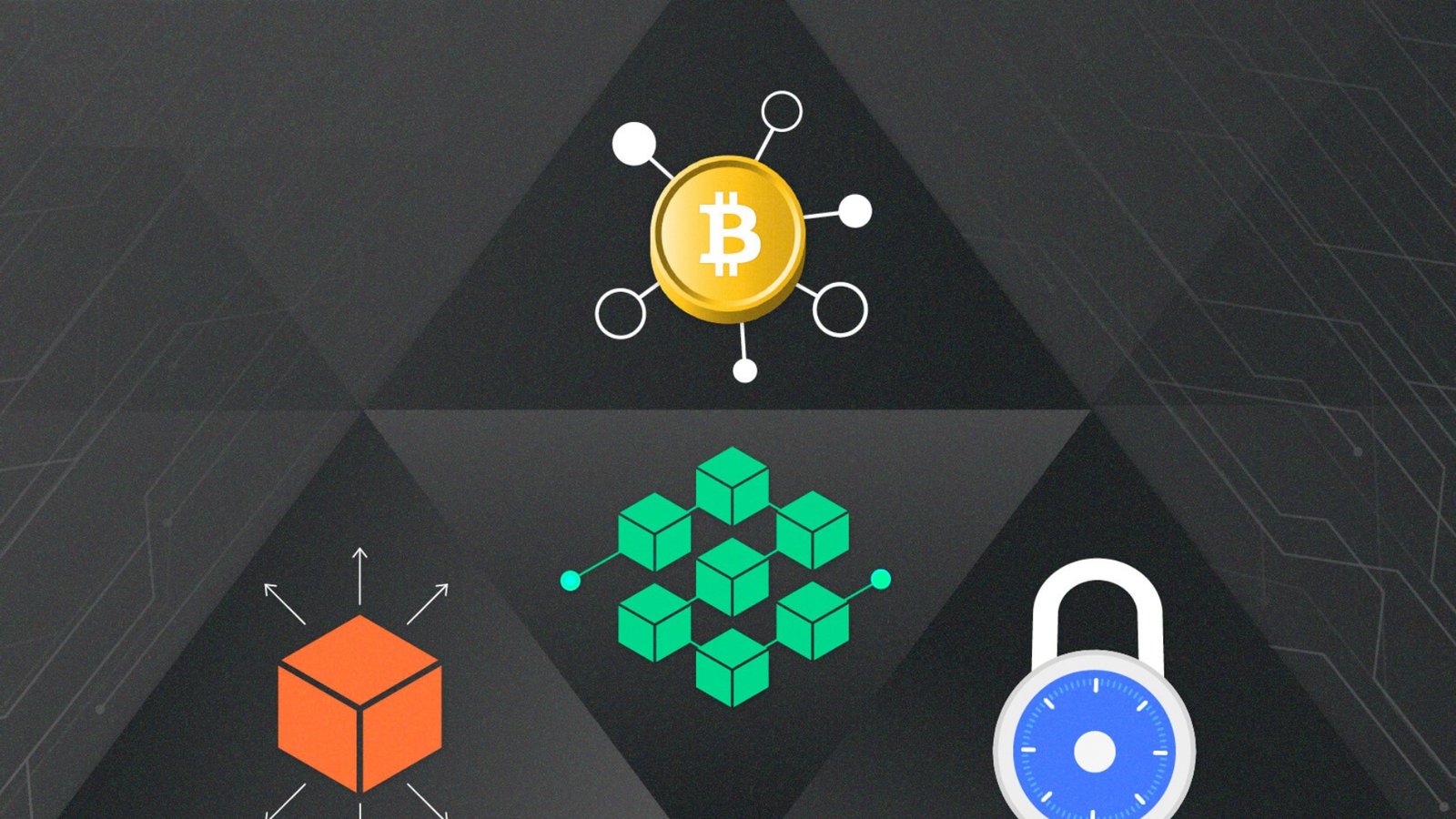
Outlining potential answers to the blockchain trilemma is the most essential part of any presentation of the trilemma for novices. Changes at layer 1, the base layer, or tools at layer 2, the top layer, are the usual starting points for solutions to the blockchain trilemma. The most salient answers to the blockchain trilemma in each area are summarized here.
Layer 1 Solutions
Sharding and improvements to the consensus protocol are the two most well-known layer-one approaches to solving the blockchain trilemma. Changing the network’s consensus mechanism is one of the tried-and-true methods for solving the blockchain trilemma. Questions like “What is blockchain trilemma?” should nudge you to consider how different consensus methods could play out. Switching from Proof of Work to Proof of Stake consensus, for instance, can eliminate reliance on nodes that mine for a living. With the announcement of “The Merge” in 2022, Ethereum became one of the most prominent instances of this change.
As for layer one solutions, sharding is another good option for solving the blockchain trilemma. Data can be partitioned into shards or fragments using this horizontal partitioning methodatabase administration. You can make extra room for simultaneous transaction processing by storing the shards in multiple places.
Layer 2 Solutions
New light on the blockchain significance of trilemma solutions may hold the key to its resolution. Nested blockchains, sidechains, and state channels are examples of tried and true layer 2 solutions. Each method offers a unique option regarding the primary network’s scalability, security, and decentralization.
Conclusion
Three key components—security, decentralization, and scalability—form the basis of the blockchain trilemma formulation. Any web3 or blockchain development project should be approached using a blockchain trilemma guide. Your project’s functions are blockchain trilemma.
Consider the potential that can significantly affect your project’s functionality of prioritizing scalability over user data protection in your app. However, scalability issues may arise as a result of democratizing app control.





